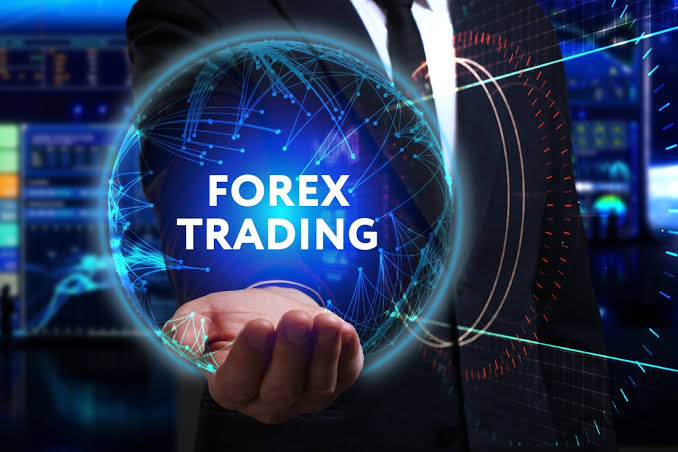Mastering Forex Algorithmic Trading Strategies and Insights 1681600016

Mastering Forex Algorithmic Trading: Strategies and Insights
Forex algorithmic trading has reshaped the landscape of currency trading, offering traders the ability to execute trades at unprecedented speeds and with enhanced accuracy. The integration of algorithms in trading not only increases the potential for profit but also minimizes human error, allowing traders to implement strategies that were previously challenging to execute manually. In this article, we will delve into the fundamental aspects of forex algorithmic trading, exploring its benefits, methodologies, and strategies necessary to succeed in this ever-evolving environment. For more insights on trading, visit forex algorithmic trading Trading Asia.
What is Forex Algorithmic Trading?
Forex algorithmic trading refers to the use of computer algorithms to automatically execute trading orders based on predefined criteria. These criteria can be based on various parameters, including price, timing, and volume, driven by mathematical models and statistical analysis. The increasing availability of sophisticated trading platforms and software has made algorithmic trading accessible to both retail and institutional traders.
Benefits of Algorithmic Trading
There are numerous advantages to implementing algorithmic trading strategies in the forex market. Some of the key benefits include:
- Increased Speed: Algorithms can process vast amounts of market data and execute trades at speeds far beyond human capability.
- Enhanced Consistency: Algorithms eliminate emotional decision-making, allowing for disciplined adherence to trading strategies.
- Backtesting: Traders can backtest their strategies using historical data to simulate performance before applying them in live trading.
- Diversification: Algorithmic trading allows traders to diversify their portfolios by simultaneously trading multiple currencies and strategies.
- Reduced Costs: Automated trading can lower transaction costs by minimizing slippage and improving execution quality.
Key Strategies in Forex Algorithmic Trading
The foundation of successful algorithmic trading lies in the strategies employed. Here are some commonly used strategies:
1. Trend Following
Trend-following strategies identify and capitalize on ongoing market trends. By utilizing indicators such as moving averages and momentum oscillators, traders can develop algorithms designed to enter long positions when securities are in an uptrend and short positions when they are in a downtrend.
2. Arbitrage
Arbitrage involves exploiting price discrepancies between different markets or instruments. Algorithmic traders can automate the process of buying and selling assets simultaneously to profit from these inconsistencies, enhancing their trading performance.
3. Mean Reversion
Mean reversion strategies are based on the principle that asset prices will revert to their historical averages over time. By identifying overbought or oversold conditions using tools like Bollinger Bands and RSI (Relative Strength Index), traders can set up algorithms to trigger trades when prices deviate significantly from their mean.
4. News-Based Trading
News-based trading strategies focus on leveraging economic data releases and news events that impact currency values. Algorithms can analyze news sentiments and historical price movements to make trades instantaneously following breaking news, giving traders a competitive edge.
Developing Your Own Forex Trading Algorithm

Developing a custom trading algorithm requires a solid understanding of both programming and financial market principles. Here are the essential steps to create your own forex algorithm:
1. Define Your Strategy
Before coding, it’s crucial to clearly define the trading strategy you wish to automate. Document all rules regarding entry and exit points, risk management, and trade sizing.
2. Choose a Programming Language
Popular programming languages for algorithmic trading include Python, R, and C++. Choose a language you are comfortable with and that is supported by your trading platform.
3. Backtesting
Once your algorithm is developed, backtest it using historical data to assess its performance. Adjust parameters and refine your strategy based on the results obtained during the backtesting phase.
4. Live Testing
After successful backtesting, deploy your algorithm in a live environment using a demo account. Monitor its performance closely, and remain ready to make any necessary adjustments as market conditions change.
Risk Management in Algorithmic Trading
While algorithmic trading can offer significant advantages, it is essential to incorporate robust risk management practices. Key components include:
- Setting Stop-Loss Orders: Automating stop-loss orders can help minimize losses when trades do not perform as expected.
- Diversification: Spread risk across different currencies and strategies to reduce exposure to any single market event.
- Position Sizing: Determine the appropriate position size using risk-reward ratios to manage potential losses effectively.
The Future of Forex Algorithmic Trading
As technology continues to advance, the future of forex algorithmic trading appears promising. Artificial intelligence and machine learning are expected to play a pivotal role in the evolution of trading strategies. By leveraging massive datasets and sophisticated analytical tools, traders will be better equipped to navigate complex market dynamics and enhance decision-making processes.
Additionally, as more traders recognize the potential of algorithmic trading, competition in the forex market will intensify. As such, continuous learning, the development of innovative strategies, and effective risk management will remain paramount for success in the future landscape of forex algorithmic trading.
Conclusion
Forex algorithmic trading is an exciting and rapidly evolving field that embodies the intersection of finance, technology, and mathematics. By understanding its principles and mastering various strategies, traders can enhance their performance and increase their chances of success in the foreign exchange market. Whether you are an experienced trader or just starting, embracing algorithmic trading can lead to new opportunities and insights into the world of Forex.

